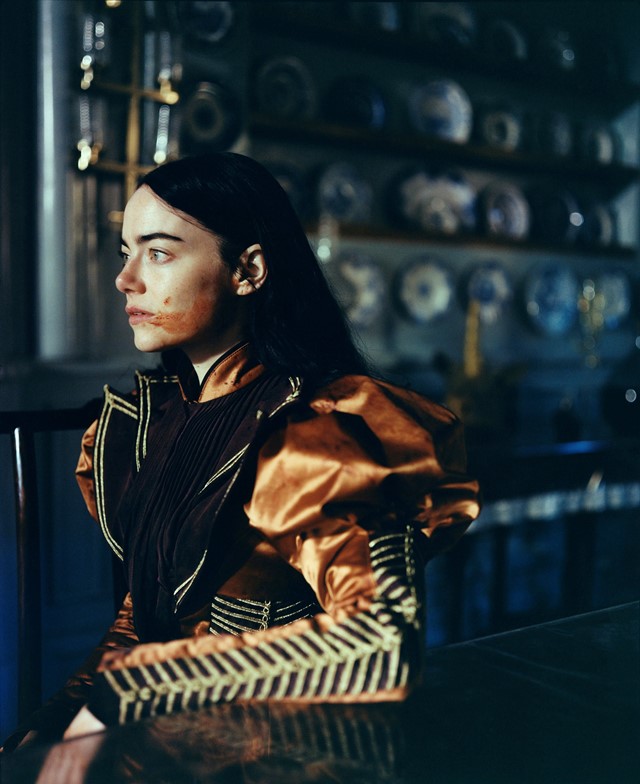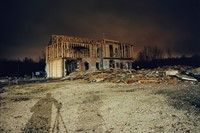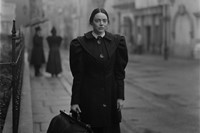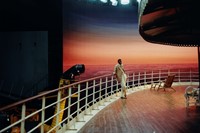Published by Void, Dear God, the Parthenon Is Still Broken features large-format images captured and developed on the set of Poor Things, made collaboratively by Yorgos Lanthimos and Emma Stone
Shocking, sumptuous, and hilariously filthy, every frame of Yorgos Lanthimos’ Poor Things is delightfully excessive. From its ingenious set designs that traverse 19th-century Europe to its flamboyant costumes and dazzling cinematography, the film has been a critical and commercial success, scooping 92 awards – including four Oscars.
Now, Lanthimos invites us behind the scenes in a new photo book, titled Dear God, the Parthenon Is Still Broken and published by Athens-based imprint Void. Bound in a cloth hardback cover, it presents large-format images captured and developed on set, a process that became a collaborative effort with his lead actor Emma Stone.
After a busy day of filming, the pair would meet in his makeshift darkroom to develop the negatives. “[The collaboration] added to the excitement of the task. One would push the other, no matter how tired we were,” Lanthimos told the publisher. Stone had never developed large-format film in a darkroom before. “I became obsessed,” she said. “The high-stakes meditation of it is very special to me – you have to remain in control, you don’t want to screw up the pictures.”
The result of their alchemic collaboration, Dear God, the Parthenon is still broken, is an object in and of itself. “I always hoped that I would manage to get enough decent pictures to make a book – a body of work that could exist on its own, independent of the film,” said Lanthimos. The book invites us into the film’s constructed cities and interiors. While the narrative is set in late 19th-century Europe – in London, Lisbon, Marseille, and on a cruise ship – the entire film was shot in a studio in Budapest. The Lisbon set took 20 weeks to build, Lanthinos told The Guardian earlier this year, and 45 minutes to walk around the physical set of narrow alleys and fully formed buildings.
Lanthimos widens the frame to show the construct behind his film, showing a story within a story. In the same vein, the book includes three 90cm long gatefolds: a book within a book. Its title – Dear God, the Parthenon is still broken – is taken from a cut scene in which Bella was to send a postcard to her father, God, from Athens. Scrawled into the inside front cover is a poem by Patti Smith, inspired by the film. At times, thanks to costume designer Holly Waddington, the book’s sequence feels like an avant-garde fashion shoot: Mark Ruffalo in a bouffant dress, moody shots of the cityscape, Bella’s rush of jet-black hair, spilling onto a hardwood floor.
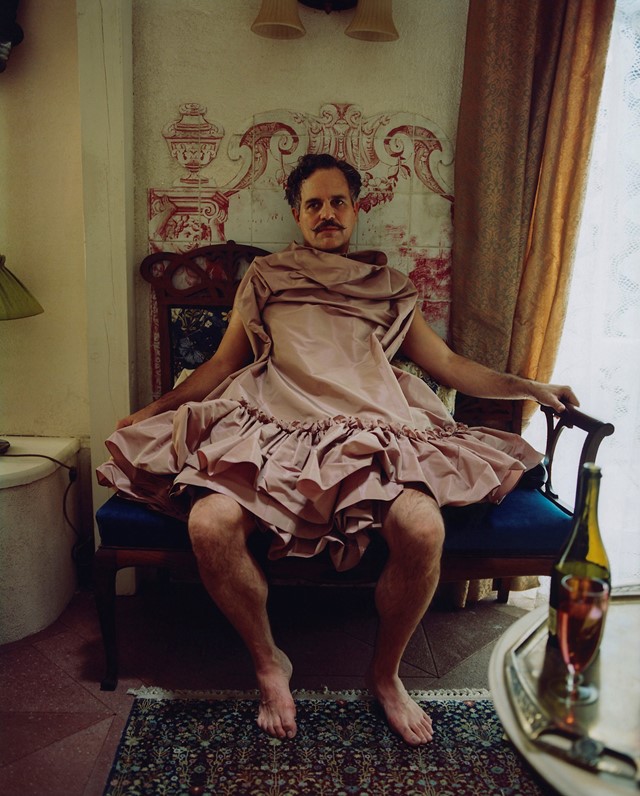
The story behind these images is poignant too, because these are the pictures that, for Stone, uncovered the magic of the photography – not in its results, but the process. “I remember accidentally clipping a beautiful portrait too low … To this day I see the marks I made. It’s of course all I can focus on because it was a mistake,” she said. “But it’s an instantaneous reminder that all of this – photography, films, life – is full of mistakes and human error that can also end up being very beautiful and alive.”
What happens when we see all the driving emotions of Poor Things – desire, arrogance, humour, rage – in singular moments, burnt into permanence? Where the film is playful and at times disturbing, the book is subtle and enigmatic, but the reaction is equally visceral. Removed from the melodrama of moving images, stillness allows viewers time to contemplate and reflect. In Dear God, the Parthenon Is Still Broken, Lanthimos ushers us behind the looking glass, but he doesn’t break the spell. Instead, he brings the magic to life in an entirely new light.
Dear God, the Parthenon Is Still Broken by Yorgos Lanthimos is published by Void, and is out now.
